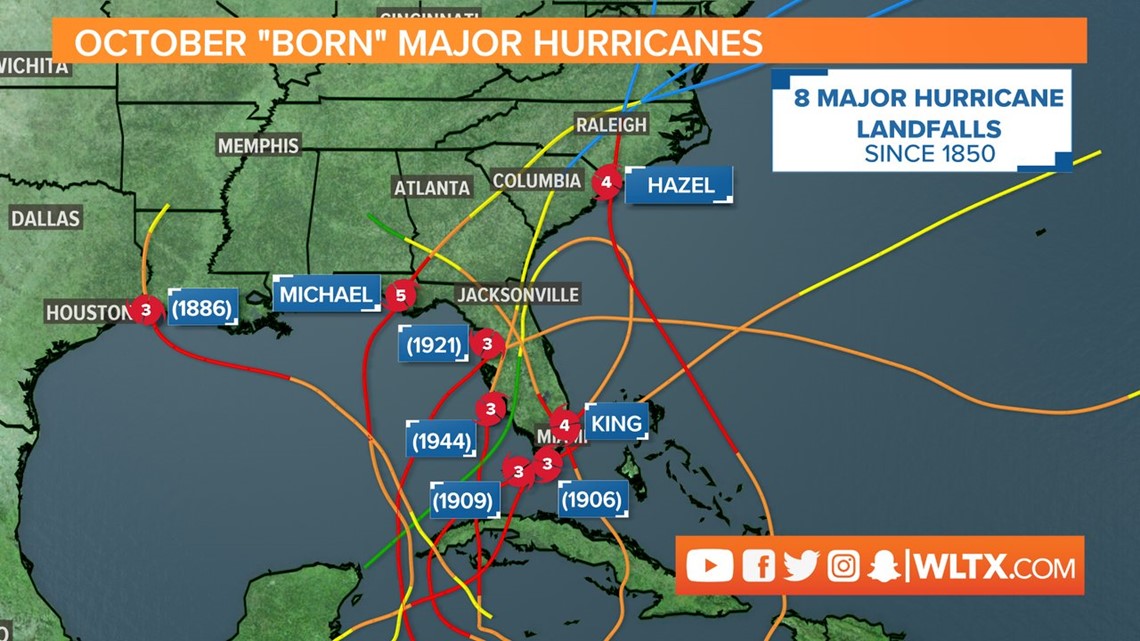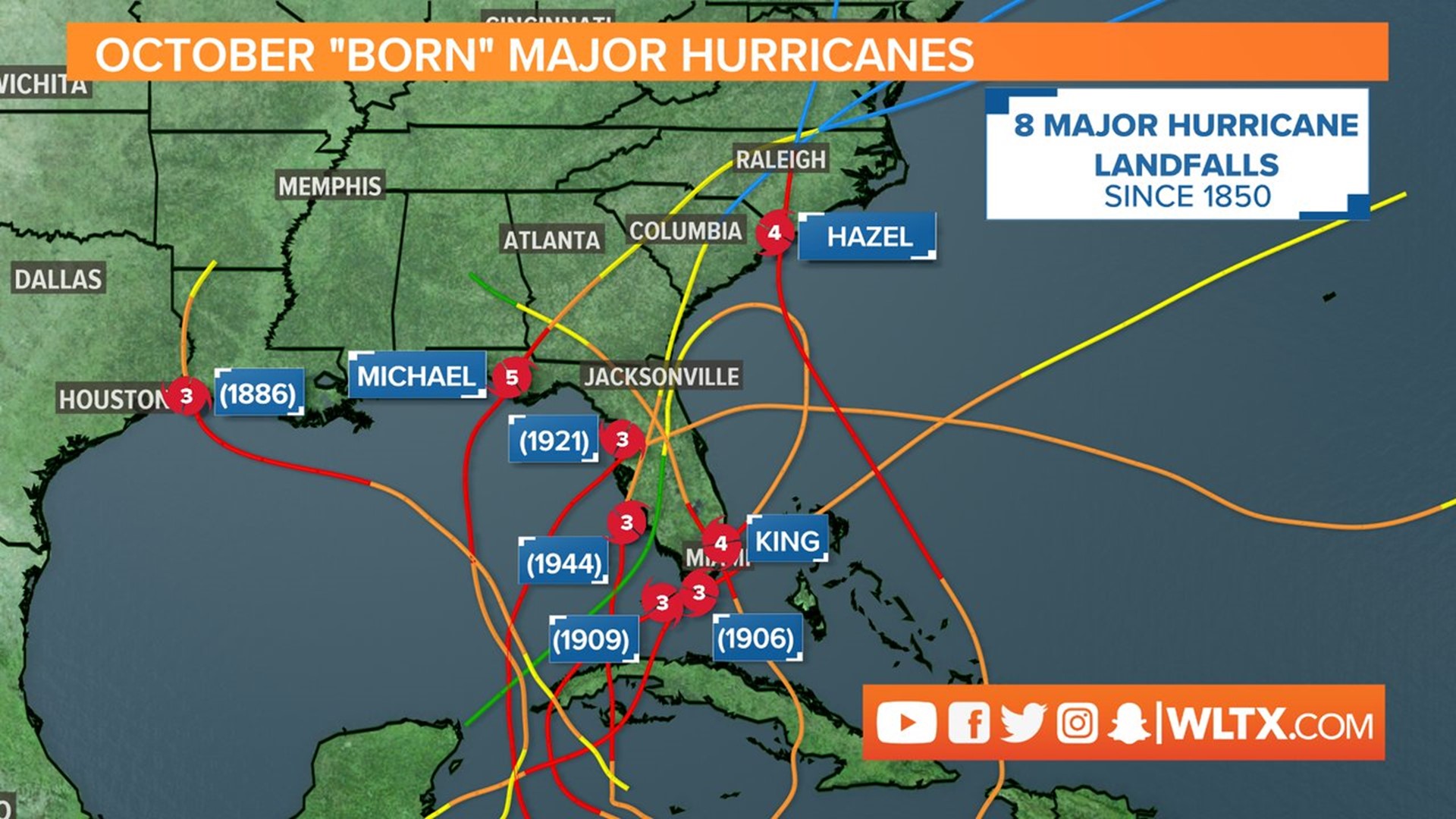COLUMBIA, S.C. — The peak of hurricane season activity is behind us, but hurricanes have a destructive history in the month of October. Changing weather patterns this time of the year put some parts of the United States at much greater risk than others this time of the year.
Hurricane season starts June 1st and ends on November 30th, but not all months are created equal. The most active part of the season typically starts very quickly in mid August, but activity is slow to fade in October because water temperatures are still warm.
Water temperatures early in October can still support major hurricanes that rapidly intensify in the Gulf of Mexico and Caribbean. Hurricane Michael developed in 2018 on October 7th and made landfall just 3 days later as a Category 5 hurricane. Since 1850, 9 major hurricanes (category 3 or higher) born in October made landfall in the mainland United States.
In South Carolina
Hazel was the only one major hurricane make landfall in South Carolina. The storm developed near the Caribbean and had devastating impacts in Haiti before the storm moved north towards South Carolina. Hazel was a category 4 when it made landfall northeast of Myrtle Beach on October 15, 1954 with winds of 130 mph. The storm had a 40 mile wide eye according to reports.
In October 2015, moisture from Hurricane Joaquin funneled into South Carolina. Although the storm was never close to land, it fueled a pattern that brought unprecedented flooding to the Midlands.


The hardest hit state in Florida
Florida is hit the most frequently by far with 7 major hurricane landfalls on record. Two major hurricanes, Wilma and Michael, made landfall in Florida in the past 15 years.
The Gulf of Mexico and the Caribbean are the typical origin points for October's biggest hurricanes. Frequent dips in the jet stream over the United States during transition months like October can guide storms toward the northeast. These patterns will often sweep storms away from the western Gulf and send them into the eastern Gulf, putting states like Florida at greater risk than Texas this time of the year.

